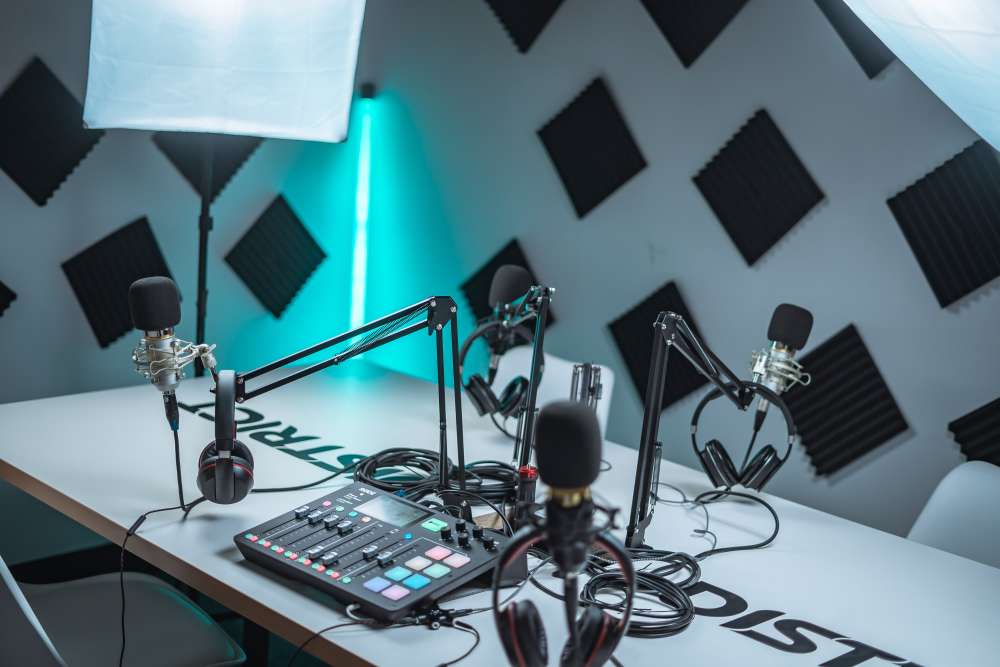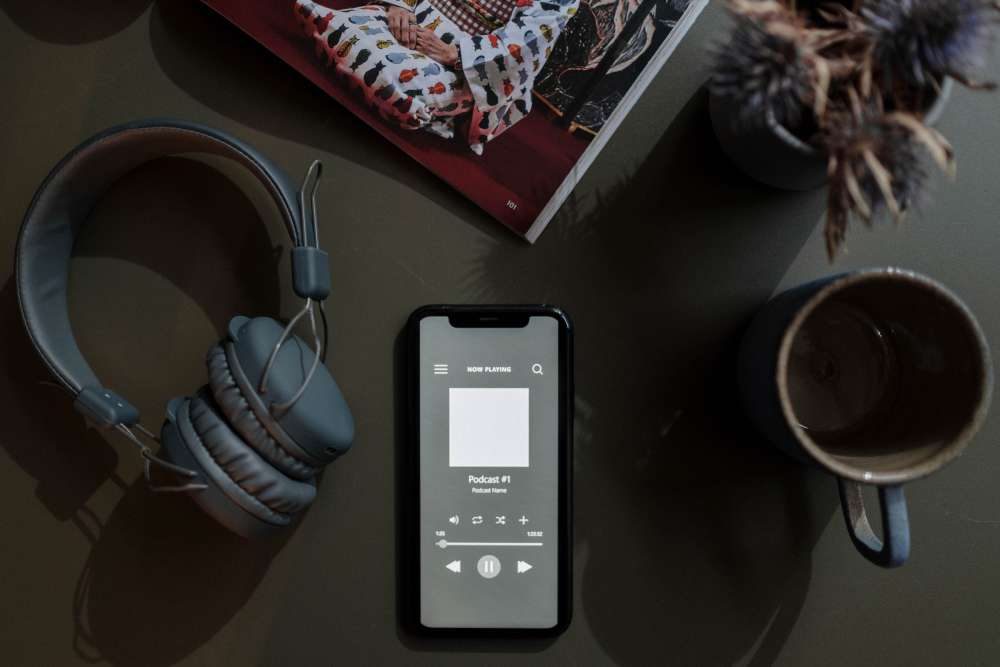Fitness podcasts have gained considerable popularity in the US in recent years. From “The Mind Pump Podcast” to “The Model Health Show” and “The Rich Roll Podcast,” these programs offer a wealth of knowledge about fitness, nutrition, and wellness.
They provide practical advice, inspire healthy habits, and offer a sense of community for like-minded individuals. As personal trainers or fitness entrepreneurs, creating your own podcast can not only amplify your influence within the fitness community but also enhance your fitness business.
In this guide, we’ll uncover all the steps you need to start your very own fitness podcast.
1. Discover Your Unique Angle in the Fitness Industry
The first step towards how to start a fitness podcast involves identifying your unique perspective . As a fitness trainer or fitness business owner, your experiences, expertise, and passions within the fitness industry provide a distinct lens through which you view health and wellness.
Perhaps you specialize in strength training, HIIT, yoga, or CrossFit, or you may have a unique approach to nutrition or mental health within fitness.
Identifying your niche can inform the overall direction of your podcast, helping you focus on the topics and discussions that you are best equipped to tackle.
2. Define Your Target Audience

Who is your podcast for? Are they seasoned gym owners, fellow fitness professionals, or perhaps beginners just starting their fitness journey?
Understanding your target audience is crucial. It shapes the tone of your podcast, the depth of information you provide, and how you interact with your listeners.
3. Develop a Content Strategy
Content is the heart and soul of your podcast. As a fitness trainer, you’re no stranger to planning and organizing — qualities that are equally important when creating podcast content.
Consider a variety of formats, such as:
- Solo episodes where you share your knowledge
- Interviews with other fitness industry professionals
- Q&A sessions
- Discussions about the latest fitness trends and research
A well-rounded content strategy keeps your podcast engaging and your audience coming back for more.
4. Differentiate Your Podcast Episodes
Just as every fitness trainer has a unique style, your podcast should too. Your Unique Selling Proposition (USP) sets you apart from other fitness podcasts, making your show appealing to listeners in a crowded marketplace.
Perhaps it’s your unique approach to fitness, your dynamic teaching style, or your ability to simplify complex fitness concepts. Make sure your USP shines through in every podcast episode.
5. Invest in the Right Equipment and Software

Professional-sounding audio is a non-negotiable aspect of podcasting. Essential podcasting equipment includes a high-quality microphone, headphones, and potentially a pop filter or audio interface.
As for software, you’ll need a reliable editing tool to piece together your podcast episodes and a hosting platform to publish your podcast for the world to hear.
6. Recording and Editing Your Podcast
As the podcast host, you are the primary conduit of information and energy on your podcast. Pay careful attention to your voice’s clarity, emotion, and tone when recording.
Post-recording, editing is vital for a polished final product. Editing allows you to remove any errors, unnecessary silences, and ensure the flow of each podcast episode.
7. Create Your Podcast Brand

Your podcast brand includes your podcast’s name, logo, description, and overall aesthetic. This should be reflective of your unique angle in the fitness industry and resonate with your target audience.
For example, if you are targeting fitness entrepreneurs, your branding should communicate that you understand their needs, challenges, and aspirations.
8. Consistency is Key
Whether it’s personal training or podcasting, consistency is key. Decide on a release schedule for your podcast episodes that you can realistically maintain. Your listeners will appreciate the regularity and look forward to each new episode.
9. Engage Your Audience

A successful podcast is not a one-way street; it should encourage two-way interaction. Encourage questions, feedback, and suggestions from your listeners.
Engaging your audience builds a sense of community and loyalty and provides valuable insights into your audience’s needs and interests.
10. Monetize Your Fitness Business Podcasts
Although your primary goal may be to share your expertise and passion, monetizing your podcast can help cover production costs and potentially provide a revenue stream.
Consider sponsorships, merchandise sales, paid subscriptions, or even affiliate marketing for related fitness products or services.
11. Never Stop Learning and Improving
Just as the fitness industry continually evolves, so should your podcast. Stay updated with the latest podcasting techniques, fitness trends, and audience feedback.
The willingness to learn and adapt is a key trait of successful podcast hosts.
12. Choose the Right Distribution Channels

After you’ve recorded your podcast, the next step is to get it into the ears of podcast listeners. To do this, you’ll need to choose the right distribution channels. Here are the most popular ones:
Apple Podcasts
This is one of the most widely used podcast platforms. As such, it’s a must-have distribution channel for your podcast. Apple Podcasts provides extensive reach and the potential for your podcast to be discovered by a global audience.
Spotify
With its user-friendly interface and rapidly growing podcast listener base, Spotify is another essential channel for distributing your podcast. It also provides useful analytics to help you understand your audience better.
Google Podcasts
As the default podcast app for Android users, Google Podcasts is a significant platform for reaching your potential audience.
Stitcher
Popular among both iOS and Android users, Stitcher is another excellent channel for podcast distribution.
Other Platforms
Consider smaller platforms like TuneIn, Overcast, and Pocket Casts. Although these platforms have smaller user bases, they still provide opportunities for increased exposure.
Your Website
Hosting your podcast on your website allows you to control the listening experience. It can increase your site’s traffic, boosting SEO and encouraging visitors to explore your other offerings. This blog will give you tips on building a website for your fitness business if you don’t have one.
13. Promote Your Podcast
After setting up your distribution channels, it’s time to promote your podcast.
Use your social media platforms to reach your existing followers and attract new ones. This is a great marketing tip for your business. Consider collaborating with other fitness professionals for joint episodes to leverage their audience.
If your budget allows, explore paid advertising options on social platforms like Facebook, Instagram, Youtube, and LinkedIn.
14. The Importance of Starting a Fitness Podcast
Starting a fitness podcast as a fitness trainer or gym owner can have several benefits, both for you as a fitness entrepreneur and for your audience. Here are some reasons why making a fitness podcast is essential:
Extend Your Reach
A fitness podcast allows you to reach a broader audience than you might otherwise reach through traditional personal training methods. Podcasts can be accessed by anyone, anywhere, anytime - making your fitness business truly global.
Establish Authority
Podcasts provide a platform for sharing your knowledge, experiences, and expertise in the fitness industry. Consistently delivering valuable content helps establish you as an authority in your field, which can attract more clients and opportunities.
Build Community
A fitness podcast can foster a sense of community among your listeners. It provides a platform for dialogue, sharing ideas, and encouragement. This sense of community can enhance listener loyalty and engagement.
Personal Branding
Podcasting is a highly personal medium, and as the host, your personality is front and center. This makes it a powerful tool for personal branding, allowing you to forge a deeper connection with your audience.
Diversify Your Fitness Business
A successful podcast can open up new revenue streams for fitness business owners, such as sponsorships, affiliate marketing, merchandise sales, and more. It can also drive traffic to your other offerings, like fitness training sessions, online courses, or fitness products for your fitness business.
Educate and Inspire
Perhaps most importantly, a fitness business podcast as a personal trainer allows you to educate, inspire, and motivate others on their fitness journeys. You can positively impact the lives of your listeners, helping them to achieve their fitness goals and live healthier lives.
Conclusion
Starting a fitness podcast as a personal trainer can be an incredibly rewarding way to share your expertise, connect with a wider audience, and grow your fitness business. It takes planning, commitment, and passion.
With this comprehensive guide, you are well-equipped to embark on this exciting journey. So turn on that microphone, start recording, and share your unique fitness insights with the world. Your future listeners are waiting!




